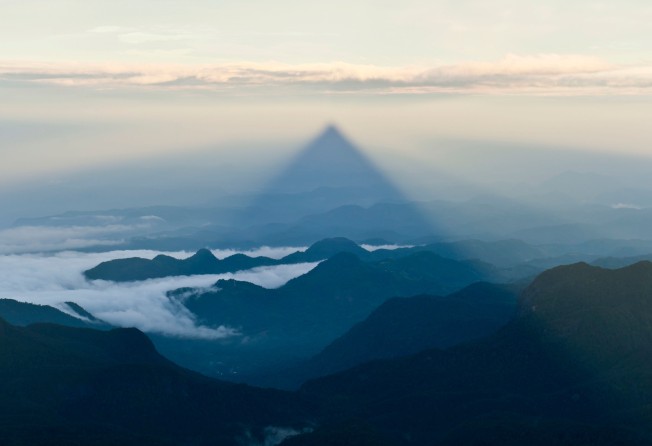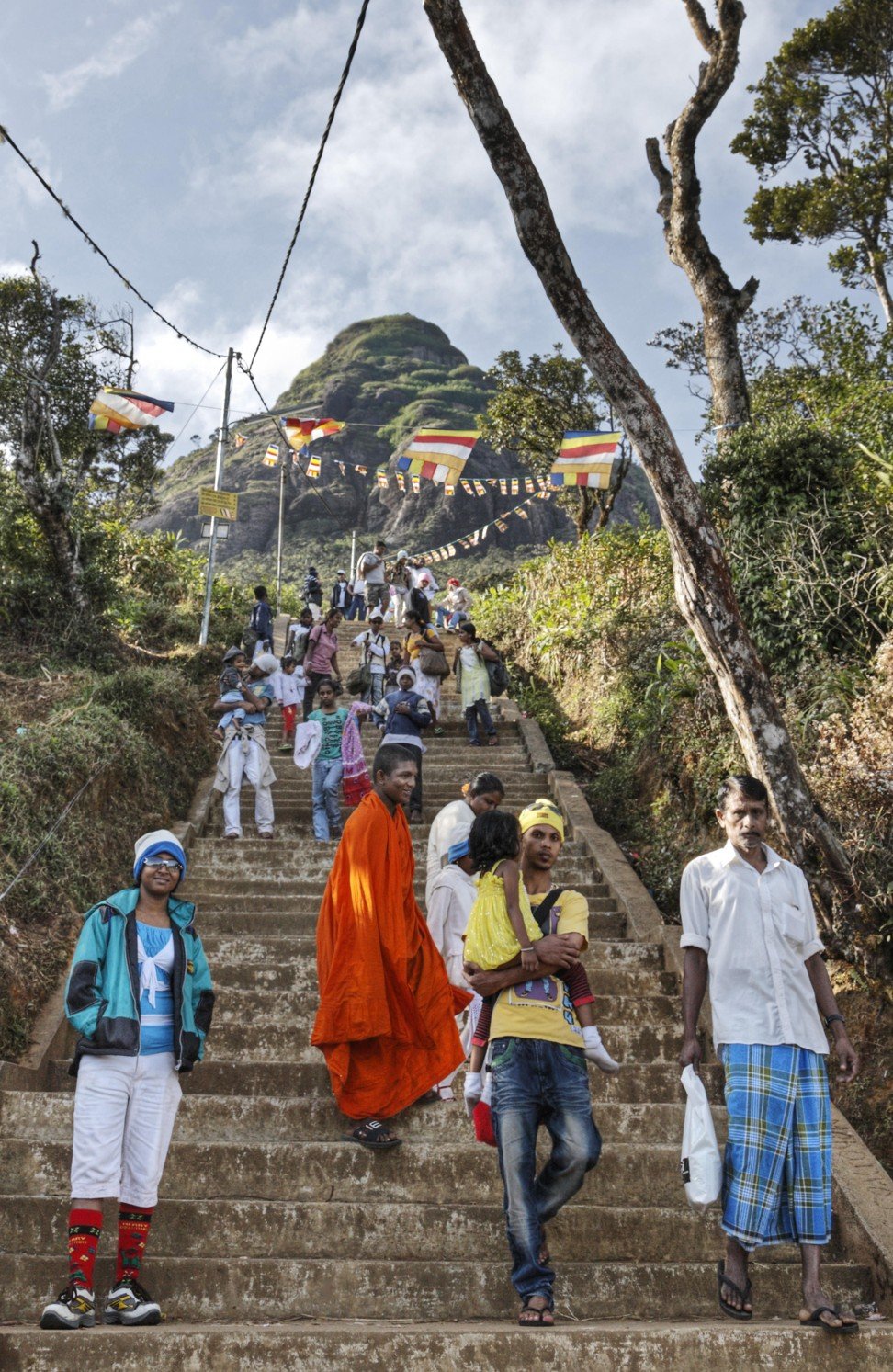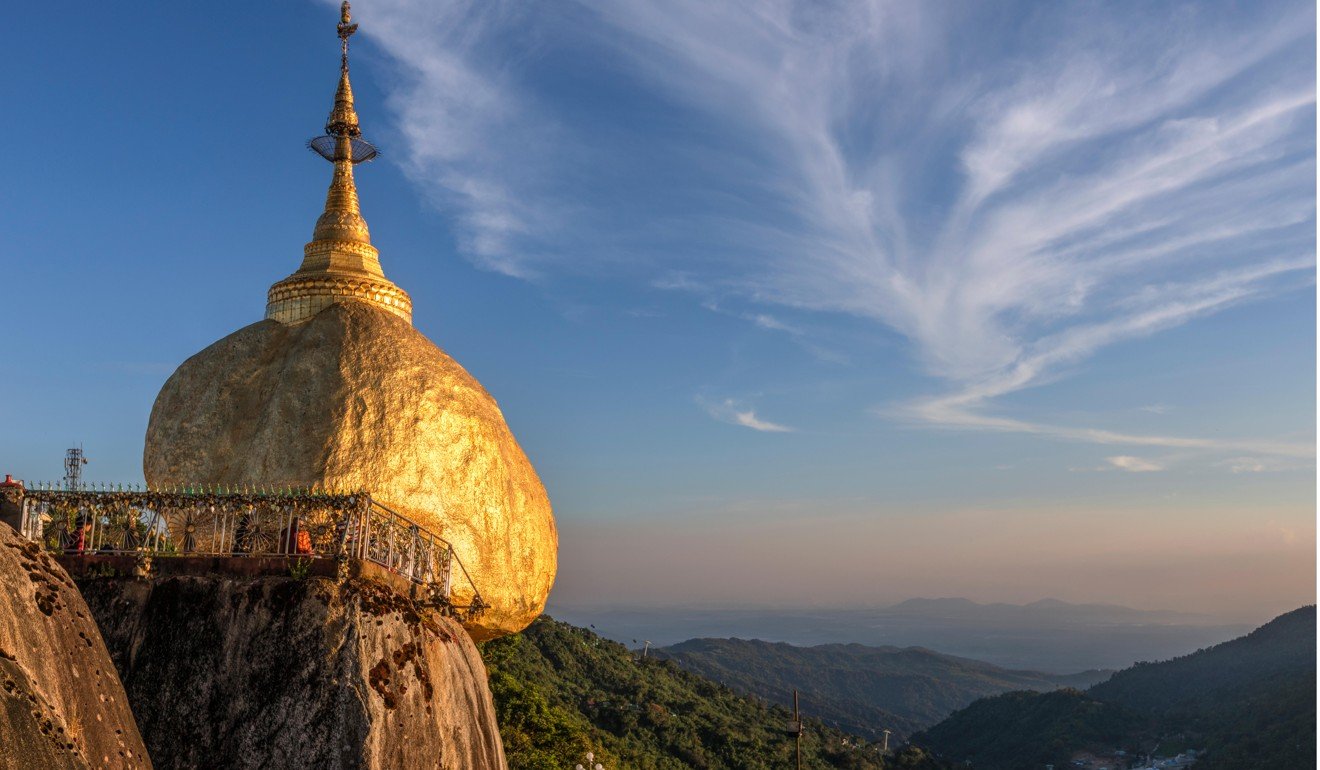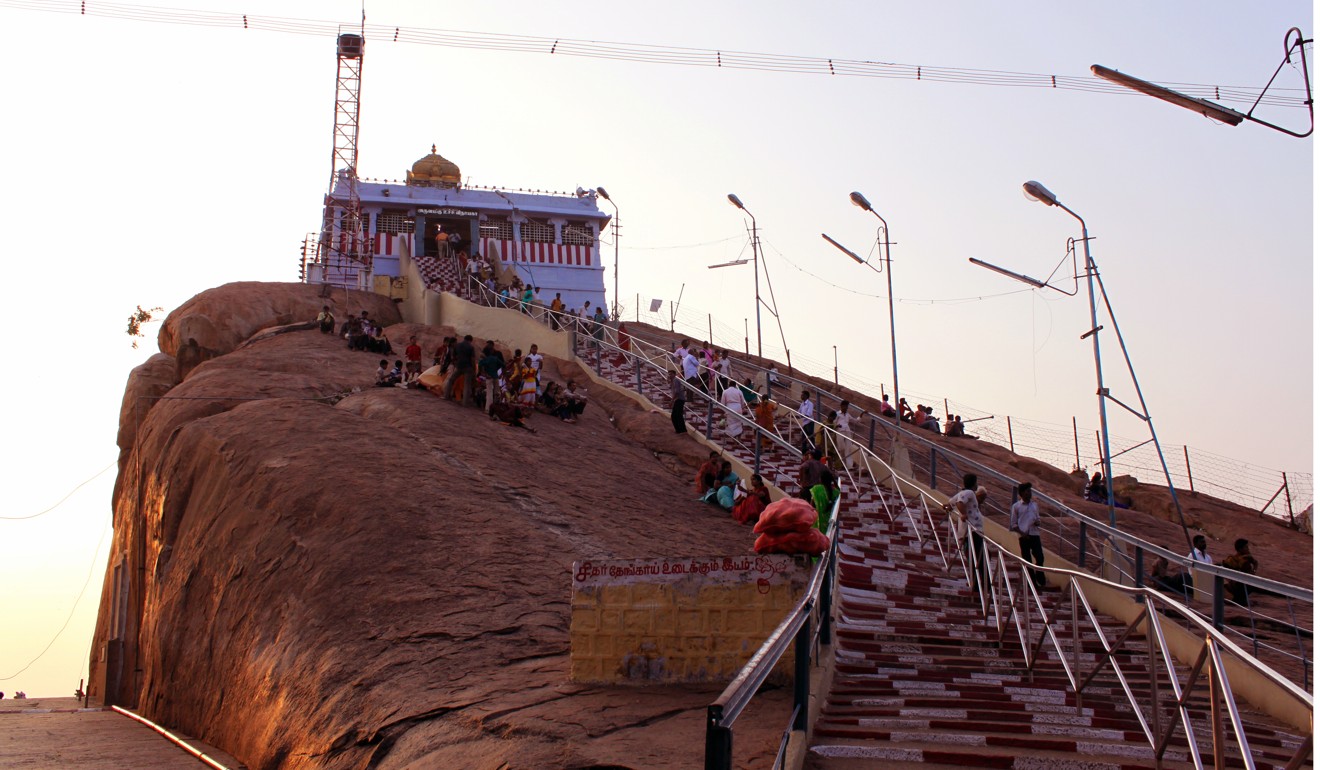
Climbing Sri Lankan holy mountain Adam’s Peak – and four other temple trails in Asia
- Seeing the sunrise from the top of the 2,243-metre peak requires a five-hour night climb up 5,000 steps – it’s not for the faint-hearted
- Adam’s Peak, or Sri Pada, in Sri Lanka has been a pilgrimage site for 1,700 years for Buddhists, Hindus, Muslims and Christians

Sunrises are overrated. At least, this is what I told myself as I completed yet another set of 50 wide steps, only to see yet another set above me.
However, with twilight quickly fading, on the steep, narrow and winding steps above me, a few dozen people were about to witness a beautiful dawn from a mountaintop temple. I was exhausted and about to miss the big moment.
Adam’s Peak in Sri Lanka’s central highland region is a mountain 2,243 metres (7,360 feet) high whose summit is reached via a path that features more than 5,000 steps. It is not a place for hikers and climbers, but pilgrims from various faiths.
Buddhists call it Sri Pada and believe that the stone tablet in a shrine at the top contains the footprint of Buddha (sri pada is Sanskrit for “sacred foot”). Hindus think it is Shiva’s footprint, Muslims that of the Prophet Adam, and Christians the Apostle St. Thomas. It is thought to have been a pilgrimage site for over 1,700 years.

The constant strings of Buddhist flags make it obvious which religion Adam’s Peak is predominantly claimed by as a place of worship, but on most mornings the majority of visitors are tourists. They climb to watch the sunrise, and as I completed yet another, even steeper stretch of steps, I could see their faces above me. They were lit up, but not yet by a rising sun.
As I reached the top I filed past a few familiar faces, all of them looking east in chilly anticipation of the first warming rays of sunlight. Some had overtaken me an hour ago. I walked straight past them all, circled the small two-level shrine that contains the stone tablet, and found a west-facing position that looked over a lush landscape of misty forested peaks.
Why? Because watching the sun appear isn't much of a spectacle. It is what you might find when looking 180 degrees the other way that is almost always more precious. At Adam’s Peak, the sunrise projects a mighty triangular shadow on the landscape to the west, and I wanted to be the first to see it.

This shadow is a striking yet fleeting sight, and several minutes passed until the sun-seekers arrived around me to see the fast-fading spectacle.
If the view was incredible, so was the smell; nine metres below me was a stinking rubbish tip, the detritus of thousands of pilgrims, as well as a visibly ageing complex of grubby toilets and washrooms. I obviously wasn’t the first to stand here, but to see that steep, peaked shadow reminded me what I had just achieved after climbing for five hours through the night, having started at 2am.
As the triangle faded, a troupe of young monks appeared from the pagoda to bang drums as they moved around the small complex.
At dinner the previous night a French tourist had told me not to bother climbing Adam’s Peak. Yet that was the sole reason I was in Nallathanniya, a small, dusty and entirely functional village that leads to the beginning of the trail. He complained about a very steep and unpleasant climb, and said the sunrise had been invisible when he went up.
For all his griping, the lodges of Nallathanniya can quickly fill with both Sri Lankans and tourists, particularly in January and February at the peak of pilgrimage season, which starts on December’s full moon.
Full moon nights and a few nights either side are crowded, but you can climb any night, and the temperatures are cooler in the dark. Dim electric lights partly illuminate the concrete steps, most of which are in good condition, but a headtorch is nevertheless handy.
There are stops for tea and coffee on the steps, and occasionally a toilet, but there is no time to hang about. The climb is monotonous and something to be endured.

On the way down, however, there are plenty of sights to rival that surreal shadow. In the three hours it took me to descend, I saw a bin full of monkeys; several dozen stalls selling footballs, giant teddy bears and plastic buckets; and streams of workers carrying heavy loads of everything from slabs of drinks cans and packs of water to bricks and lengths of timber up 5,000 steps.
Despite it all, climbing Adam’s Peak, up this ancient pilgrimage route, is a special way to see in a morning.
Four of Asia’s best temple trails
1. Kyaiktiyo Pagoda, Myanmar

Better known as Golden Rock for the shimmering painted (and precarious-looking) granite boulder at its peak, around Kyaiktiyo Pagoda is a great place to see a sunset or full moon – the times when the area is at its liveliest. You can watch pilgrims gather on a platform to attach small gold leaves to the rock. Tourists can join the queue, but according to tradition, women (including tourists) are not allowed to get close.
It is a four-hour walk from Kinpun (or a steep 20-minute truck ride with 40 others).

2, Shikoku, Japan
If you are after something challenging – both physically and mentally – then consider an extended stay on Shikoku. The smallest of Japan’s four main islands, mountainous Shikoku is ringed by an ancient Buddhist henro (sacred pilgrimage trail) of no less than 88 temples. Visiting each one will take you at least 40 days, something only a few thousand manage each year. April and May are the most popular months for henro, followed by autumn.

3. Ucchi Pillayar Rockfort Temple, Tiruchy, India
A town in Tamil Nadu, south India that is often the next stop on tours visiting the ancient city of Madurai, Tiruchy has a protruding ancient rock right in the middle of town on whose peak is a temple dedicated to Hindu deity Lord Ganesh. From the top you are rewarded with views of the Kaveri and Kollidam rivers. The walk takes about two hours up and down; it starts off rather steeply, but the descent is quick and you can be back in your hotel for breakfast.

4. Kulen Mountain Trail, Cambodia
If you are in Siem Reap and have had enough of the tourist queues for Angkor Wat, take a day trip to Phnom Kulen National Park about 50km to the northeast.
Not only is there a hike to the top of the sacred peak, the area is home to Preah Ang Thom pagoda, which contains a 16th century reclining Buddha. Do not miss Kbal Spean, popularly called the river of a thousand lingam (a phallic representation of Hindu god Shiva), where you can see 11th-century carvings of lingam and several Hindu deities in a riverbed.